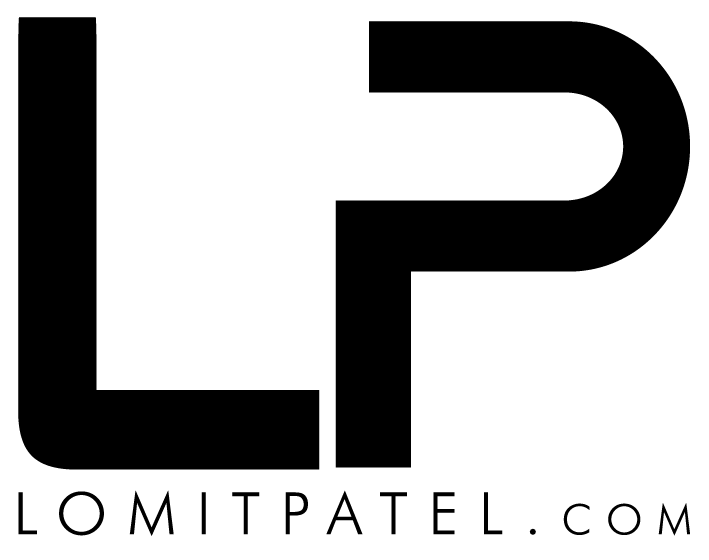Ever feel like you’re casting a wide net, but not catching the right fish? Many startup founders, investors, and marketing leaders face this struggle. You might be asking, “Why aren’t my marketing efforts attracting the right customers?” This is where understanding and defining your ideal customer profile (ICP) is crucial.
An ideal customer profile isn’t just a marketing term. It’s a detailed representation of the companies (and the people within them) that will get the most value from your product or service, while also providing you significant value in return.
Table Of Contents:
- Why Your Business Needs an Ideal Customer Profile
- Ideal Customer Profile vs. Buyer Persona
- Building Your Ideal Customer Profile, Step-by-Step
- Putting It All Together
- Conclusion
Why Your Business Needs an Ideal Customer Profile
You might believe you know all there is to know about your “ideal customers,” but often they’re not *ideal* at all. Instead, they are companies that find *some* use in your service. The best customers, however, provide your business with several key benefits.
Think of an ICP as a guide, directing your sales and marketing teams towards the most promising prospects. This tool is beneficial for both your internal and external teams. Without one, you risk wasting resources on leads that won’t convert or that will churn soon after signing up.
Produce Higher-Quality Leads
When you clearly know who you are targeting, your marketing team gains confidence in their ability to close sales. This empowers them to take bigger risks when launching new marketing initiatives. Sales also become better aligned with your go-to-market strategy.
With this more personalized method, customer retention also improves, because customers appreciate when your marketing addresses their needs. By focusing on attracting the ideal customer, you boost your chances of closing deals and achieving higher customer retention rates.
Boost Revenue Growth
When your efforts target ideal customers, based on all available data, outcomes drastically improve. Concentrating on the right companies yields several important results. When you prioritize leads that match the needs your business addresses, success follows.
Studies show that companies with aligned sales and marketing teams experience a 36% increase in customer retention and 38% higher sales win rates. This alignment is directly supported by a clearly defined ideal customer profile. Aligning teams directs effort toward ideal customer acquisition.
Shorten Your Sales Cycle
Having all this data facilitates closing deals more quickly. The more effectively you gather and organize this vital information, the more opportunities your business will have. Knowing your ideal customer inside and out enables you to create personalized messaging.
This accelerates the sales process, reducing wasted time on leads that cannot be qualified. This level of personalization boosts revenue. Fast-growing companies experience 40% more revenue growth from personalized approaches.
By identifying which industries and types of leads you aim to attract, your team’s sales will improve. Analyzing customer data and behavior patterns helps identify future customers.
Better Account-Based Marketing (ABM)
ABM is more than just a trend; it’s a fundamental strategy vital for B2B companies. A robust ABM program achieves exceptional engagement that converts into closed deals. Did you know that most B2B marketers utilize Account-Based Marketing?
ABM heavily relies on the types of leads selected by marketing, and a precisely targeted ICP forms its foundation. A significant 94% of B2B marketers employ Account-Based Marketing, highlighting its importance in the current business environment.
Ideal Customer Profile vs. Buyer Persona
It’s easy to confuse these two. Think of it this way: the customer profile describes the *company*, while the buyer persona describes the *people* within that company.
Both are essential in marketing to understand how to approach each effectively. While both support sales teams, they have distinct functions.
While an ideal customer profile defines the ideal *company* (size, industry, revenue), buyer personas focus on the *individuals* within those companies who influence purchasing decisions. You might have multiple buyer personas (e.g., the CFO, the Head of Marketing, the IT Manager) within a single ideal customer profile company.
Building Your Ideal Customer Profile, Step-by-Step
So, how do you move beyond theory and create an effective profile process for the ideal customer? It involves data collection, research, and understanding that it can evolve, especially when incorporating user feedback.
Creating an ideal customer profile isn’t easy. Start with the following steps, and we’ll guide you as best as we can. Identifying those customers and crafting profiles for each segment can expedite deal closures.
1. Start With Your Best Customers
Which current customers gain the most value from your product and provide you with the best return (revenue, referrals, case studies)? Begin with those best users, especially newer customers who consistently upgrade. Existing customers can provide invaluable information.
Customer feedback is vital, as these individuals are actively engaged in your industry. Here, you may uncover your top customer profile type, or it can validate existing internal assumptions. Gather insights by speaking with the sales, customer service, and marketing teams.
The definition of “best customers” may also depend on other metrics or business decisions. Consider these factors, as well. Ask probing questions and discuss to see if a larger ideal emerges.
Consider things like:
- Who has the highest customer lifetime value?
- Who has renewed their contracts the most?
- Who provides the most referrals?
2. Analyze and Find Common Characteristics
Once you have that list, delve deeper and start conducting data-driven research. Analyze each of the best companies, customers, and users to identify common patterns. Then, conduct market research to support your findings, especially within that size industry or market.
There are common attributes you can measure at the user level, such as demographics or pain points related to their jobs. But how does this contribute to revenue growth?
Common characteristics could include:
- Industry: Are they all in a specific sector?
- Company Size: Do they have a certain number of employees or revenue? You might also want to consider the company size of current customers.
- Budget: What level is reasonable for your services.
- Location: Are they concentrated in a certain region?
- Pain Points: What common challenges do they face that your product solves?
3. Interview and Get Feedback
It seems simple, but it’s essential: ask the customers directly. Reaching out to clients or top users for answers can clear up a lot of uncertainty. Arrange customer service meetings via online meetings, video calls, phone calls, or in-person interactions, depending on what suits both parties.
Direct conversations are the simplest method. Don’t just depend on your team’s assumptions. Schedule brief interviews (video calls, phone calls) to understand:
- Why did they choose your product?
- What problems does it solve for them?
- How do they measure success using your product?
For instance, Troops.ai increased its opportunity rate from less than 5% to 14% by targeting the right individuals with messages addressing their problems. They gathered feedback and conducted interviews to substantiate their claims. Gather customer feedback to validate your marketing decisions around ideal users and industries.
4. Outline Your Value Proposition
Why did you start your business? By clearly understanding that, you can articulate why your solution surpasses others. Write it down to fully grasp it.
When conducting this research, compare what’s been said about the industry to ensure your ideal customer, customer service, and company mission stay relevant. Revisit this regularly, so as your company evolves, the ICP, its pain points, and messaging remain accurate.
With clear customer segments, messaging is easier to deliver as we better understand customer behaviors. Understanding customer pain points and gathering feedback clarifies which user types fit our ideal customer profiles. Your product development team may gain insights on how to improve.
5. Put Your Profile into a Document and Keep Iterating.
Once you identify your customer segments, confirm that marketing and sales teams understand those segments for complete alignment. We’ve provided this example list; feel free to expand upon it. Consider the segments and document everything.:
- Industry: (be as specific as possible.)
- Ideal size company: (# of customers, # of employees)
- Ideal budget for your solutions.
- Pain points for your best customers.
- How can your services improve their problems?
This is not a one-time task. As customer behaviors change, your strategies and decisions should adapt accordingly.
Putting It All Together
The data has spoken. Understanding which prospects lead to increased deals and improved revenue streams equips marketing and sales teams for success. Ideal customers become clearer, eliminating guesswork.
We must also acknowledge that these ideals will evolve as industries change. So, what have we discussed regarding creating your profiles? Let’s review the data.
We emphasized defining your “ideal customer profile” not merely as a marketing concept. This connects to our previous research points for crucial reasons, including points that may seem obvious but are often overlooked:
- Understanding your target market to increase customer acquisition.
- Improving focus so your target audience can find you more effectively.
- Remaining flexible, because as your business grows, the needs of its customers may change.
Conclusion
Identifying your perfect customer fit facilitates valuable feedback, enhancing all future marketing efforts and focusing on the appropriate company size. Your messaging will connect with prospects, leading to more closed deals, higher win rates, improved customer loyalty, and increased referrals. This data-driven focus offers significant benefits, but are you grasping the full picture?
It doesn’t need to be overwhelming. Approach data gathering honestly, segment your users who match most closely, and act. As changes occur, remember to monitor matching customers and adapt over time.





